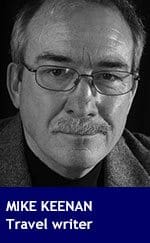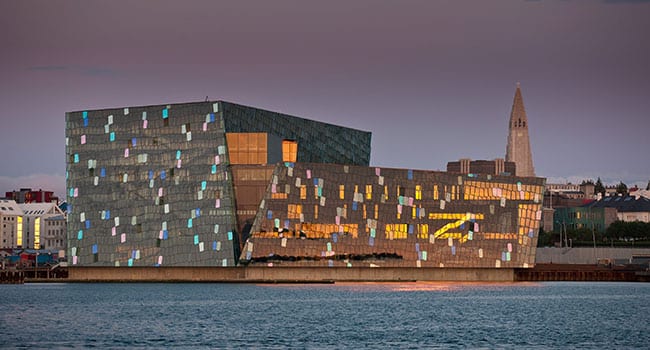 I spent three exhilarating days in Reykjavik, Iceland, a self-reliant city whose rugged inhabitants deal with constant volcanic activity along with earthquakes, avalanches and an occasional glacial flood thrown in to keep them alert.
I spent three exhilarating days in Reykjavik, Iceland, a self-reliant city whose rugged inhabitants deal with constant volcanic activity along with earthquakes, avalanches and an occasional glacial flood thrown in to keep them alert.
Geothermal heat provides inexpensive, reliable, and environmentally safe energy. Seventy drill holes varying in depth from 500 to 2,000 metres provide the capital with its hot water. In fact, natural hot water heats roughly 90 per cent of all buildings in Iceland.
Its location over a rift in two continental plates means there is a high concentration of volcanoes – an advantage for the generation of geothermal energy and the production of electricity. During winter, the pavements in Reykjavik are warmed.
Nearly three-quarters of the nation’s electricity is generated by hydro power, and only 0.1 per cent from fossil fuels, making for a pristine environment. The remarkable tap water that I drink is cool, pure, delicious, refreshing and addictive.
Here are my favourite five picks for Reykjavik:
1. The Pearl (Perlan) embodies the Icelandic melding of nature and space to accommodate vital community needs. At 25.7 metres high, it sits on a hill with 176,000 planted trees, a woodland setting with surrounding nature trails. Hollow steel framing supports a glass dome and walls that link six aluminum-sided tanks, each of which can contain four million litres of water at 85°C. Hot water is pumped through the metal framework in winter, while cold water flows during summer, producing a comfortable year-round environment.
The Viewing Deck on Level 4 takes full advantage of the panoramic view of the city. There’s 10,000 cubic metres of exhibition space on the ground floor, known as the Winter Garden, which hosts concerts and various expos and markets. There are myriad shops, and on the top (fifth) floor, a revolving restaurant completes a full circle in two hours. Apart from the four-course seasonal meal, there are traditional delicacies, such as Skyr or reindeer meatballs. The food was pricey but delicious.
2. Hallgrimskirkja Evangelical-Lutheran church, the largest church in Iceland, was designed in 1937 by Guðjón Samuel, inspired by the captivating shapes and forms created when lava cools into basalt rock. The concrete facade exudes modernism. The tower reminds me of the supersonic Concorde passenger jet. Quite tall at 73 metres, it is visible throughout the city. Inside, a gargantuan pipe organ 15 metres tall and weighing 25 tons is driven by four manuals and a pedal. It has 102 ranks, 72 stops and 5,275 pipes which produce powerful notes with a tonal range from soft to spectacular. Thousands visit daily, and I arrived during a wedding!
In front of Hallgrímskirkja, there’s a striking pagan counterpoint ‒ a statue of Viking warrior, Leif Ericson, the first European to discover America in 1,000 A.D. Strange ‒ because in the first attack recorded in England, Christian monks at Lindisfarne were hacked to death or drowned by Leif’s pagan raiders. The statue is a gift from the United States in honour of the 1,000th anniversary of Iceland’s first parliament in 930 AD.
3. Harpa Reykjavik Concert Halland Conference Centre in the heart of the city, features stunning views of the neighbouring mountains and the North Atlantic Ocean. It hosts concerts and conferences and offers two restaurants along with its shops. The compelling structure consists of a mesmerizing steel framework clad with geometric shaped glass panels of different colours that demand to be photographed from every angle. The architecture is stunning, complemented by the harbor views. Harpa houses the Iceland Symphony Orchestra and the offices of The Icelandic Opera.
4. The National Museum of Iceland provides a quick overview of Icelandic heritage and history. Its permanent exhibition, Making of a Nation, includes 2,000 objects dating from the Settlement Age to the present, as well as about 1,000 photographs from the 20th century. I marvelled at a replica of a flimsy ship in which medieval settlers crossed the ocean to their new home.
5. Walking! The capital area is geographically concentrated, so one may easily walk to most sites or use public transportation for slightly more remote visits. Walking beside the ocean on the Sculpture and Shore Walk, I encountered trim-looking joggers and the exquisite Solfar (Sun Voyager) Sculpture. Created by Jon Gunnar Arnason, the gleaming steel resembles a Viking longship. Facing majestic Mount Esja, it is a popular photo stop during the summer’s midnight sun. Along the way is Hofdi House built in 1909. It is one of the most beautiful and historically significant buildings in the Reykjavík area and best known as the location for the 1986 summit meeting of presidents Ronald Reagan and Mikhail Gorbachev that marked the end of the Cold War.
At the airport, I notice the colours of Iceland’s flag. Symbolic, they are red for volcanic fires, white for the snow and glaciers and blue for the skies above. Perfect for such an amazing, self-sufficient country!
For more information:
Visit Iceland
BECOME A TRAVEL LIKE THIS CONTRIBUTOR. Contact us for details.
The views, opinions and positions expressed by columnists and contributors are the author’s alone. They do not inherently or expressly reflect the views, opinions and/or positions of our publication.


